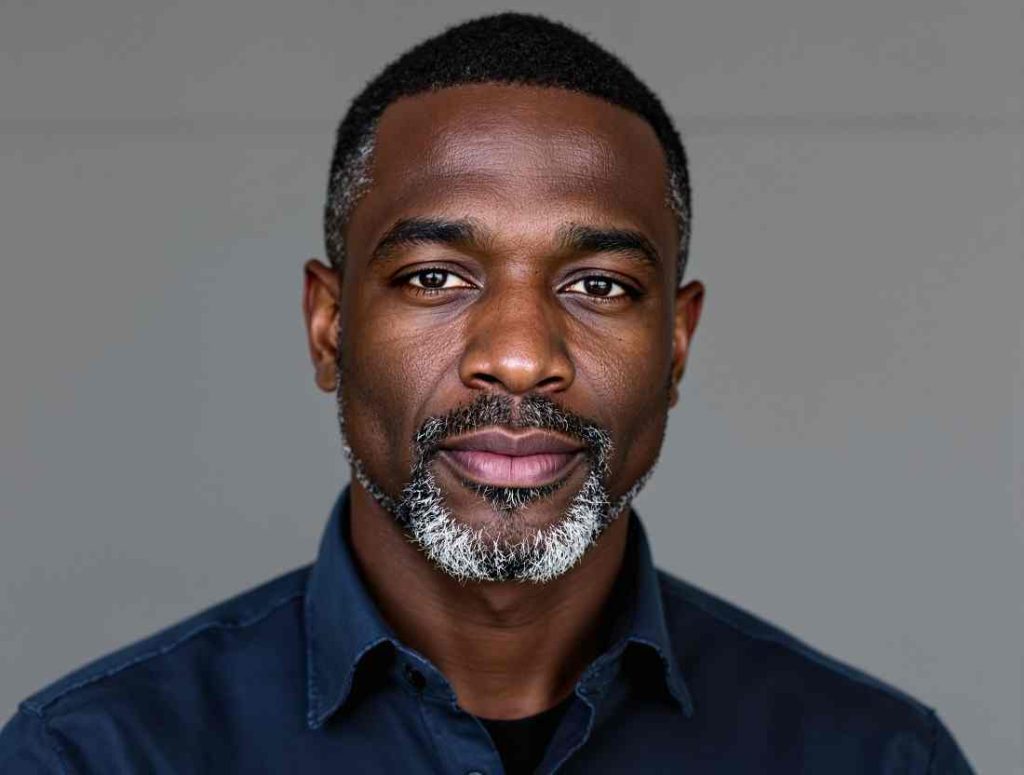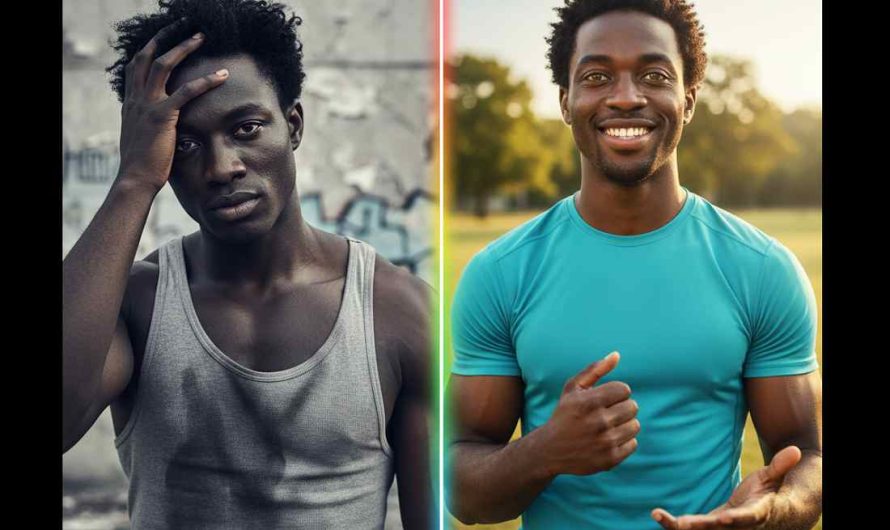by DNB editorial team.

As Griff croons in her haunting track Earl Grey Tea:
“You’re so scared you’re aging faster / So you drink Earl Grey tea ’cause you heard that’s the answer.”
It hits like a soft confession — one many gay men understand too well.
That quiet panic.
That instinct to tug at your cheeks in the bathroom mirror.
That urge to shave five years off your dating bio.
In a community where ages are whispered, edited, or omitted entirely — where youth is an unspoken currency — ageing can feel like slipping out of the frame. For a 44-year-old gay man, this is not theory; it is felt in the body, the gradual tiredness and helplessness you feel about things that once sparked real excitement, the way strangers tilt their heads and read you as “old, wise, mysterious.” The pang you felt the first time you read “no one over 30” in the beautiful Grindr profile you were just about to message.
But why does ageing strike such a deep chord in gay men? Why does it stir fear, dread, or quiet shame in a community that fought so hard to love itself?
The answers to this fear lie in our history, our culture, our psychology, and in the world we grew up resisting in one way or another. Understanding how these forces overlap — and how deeply they shape our sense of worth and belonging — may be the first step toward reclaiming what ageing should look like for us: a process rooted in dignity, pride, and community rather than disappearance and fear.
1. Youth as social currency in gay culture
Gay male culture often treats youth like social currency. From the shirtless bodies on Instagram to emotionless dating app bios that read “my age or younger only”, the message is simple: younger = hotter = more valuable.
Straight men, culturally, have alternative status markers — fatherhood, marriage, career expectations — that cushion the loss of youth’s glow. But gay men, excluded from these traditional paths for generations, often learn to anchor self-worth to the body and its perceived desirability (Hudson, 2018)4.
Historically, many gay spaces focused on nightlife, physical freedom, and sexual expression — places where youthfulness signalled value and desirability (Hajek, 2018)3.
And today, this plays out on almost every aspect of gay social life, loudest even on dating apps and social media:
- “25 is old in gay years.”
- “If you’re over 35, don’t message me.”
- “You look great for your age”, — said as though it’s extraordinary to age at all.
In these environments, ageing can feel like a slow fade into invisibility — not due to fading beauty as maturity does carry its own quiet allure —but because this stage often signals a descent into the community’s shrinking mirror of desirability.

2. Impact of AIDS – A loss that lingers
Ageing in gay culture is not merely aesthetic — it’s historical. The AIDS generation was nearly erased.
The 1980s and 90s removed an entire cohort of gay elders. Entire lineages of mentorship, humour, sexuality, and support were lost. Those who survived often carry survivor’s guilt and grief — a distorted relationship to time itself (Orel, 2014)7.
For many, growing old feels like something they were never taught how to do. There was no template, no role model, no “this is what 50 looks like for us.”
Structural exclusion caused more issues
Structural exclusion added more weight. Marriage equality, adoption rights, and societal acceptance came late for queer people. Many older gay men entered midlife without family structures, institutional support, or legally recognised partnerships (Brennan-Ing et al., 2022)1. Ageing, for them, is not simply about wrinkles — it is about the fear of being alone, with no safety net.
How intersectionality compounded invisibility for Black gay men
For Black and African queer men, the fear of ageing is further complicated by intersectionality. The challenge is not just ageism but the compounded burden of racism, homophobia, and ageism—a triple threat to stability and self-worth (Woody, 2017)10.
Stigma, religious pressure, family expectation, and criminalisation (in many countries) deepen the dread of ageing alone or ageing invisibly.
Many queer Africans describe an added fear:
- Who will care for me if my family rejects me?
- Who will see me if my community doesn’t?
These realities complicate the already-fragile terrain of ageing as a gay man, often magnifying the feeling that a safety net doesn’t exist.
3. The psychological toll of gay ageism
Research shows that gay men often internalise community ageism.
This is known as internalised gay ageism — a form of minority stress where self-worth deteriorates under the pressure to remain perpetually youthful (Sharma & Subramanyam, 2024)8.
This internal pressure can lead to:
- Anxiety and depressive symptoms: Studies show older gay men report significantly more negative views of ageing and related mental-health challenges than heterosexual men (Lyons et al., 20225; Wight et al., 2015)9.
- Social withdrawal: Feeling “past your prime” can lead to isolation — especially for single gay men who fear ageing will block romantic or sexual connection.
- Desperate attempts to “stay young”: From extreme fitness routines to cosmetic interventions to compulsive app use, many gay men chase the illusion of eternal youth to remain visible.
- Relationship strain: Age gaps attract stigma, and men who come out later in life often feel doubly marginalised — both in mainstream society and gay spaces.
All these factors combine to reinforce the same message: Ageing makes you less worthy. A lie that harms more than just individuals, but weakens the broader gay community.

4. Rewriting the script of queer ageing —Practical steps
Ageing does not have to be a descent into invisibility. Gay men across the world — especially those who have already carved space through trauma — are building new templates for what queer ageing can look like.
A. Build Intergenerational Connection
Research shows that mentorship and community care significantly improve well-being among older LGBTQ+ adults (Meri-Esh and Doron, 2009)6. Younger men gain wisdom; older men regain visibility.
B. Create Inclusive Community Spaces
Nightlife, digital platforms, and queer organisations must intentionally include older voices. Dating apps can remove exclusionary language. Community centres can highlight older queer narratives. Visibility is healing.
C. Strengthen Social Support Networks
Many older gay men lack traditional family structures. Policy-level support — such as housing programs, health services, and social-care networks — reduces vulnerability (Brennan-Ing et al., 2022)1.
D. Reframe the Value System
Ageing brings depth, not deficit. Qualities that grow with age — humour, emotional maturity, compassion, stability — often matter more in long-term connection than youthful beauty ever could.
E. For the Individual: Own Your Age
Not with shame. Not with apology. But with the quiet knowing that surviving, loving, and becoming are both beautiful and priceless.
5. A Call for a More Courageous, Connected Community
As gay men, we’ve fought battles for visibility, equality, and self-acceptance. Tackling ageism should be no different.
It starts in small ways:
- sharing stories that help others navigate their own challenges and make informed decisions.
- mentoring across generations.
- refusing to disappear— proving life stays full and meaningful as we age.
- celebrating the men who aged so we could have tomorrow.
Because every wrinkle is not a mark of decline — it is evidence of survival. So maybe it’s time we sip our Earl Grey, not to slow the clock, but to savour the years we earned. Gay or straight, young or old, the most timeless thing about any of us is the courage to keep showing up.
And that courage? It only grows with age!
Resources for Ageing Queer Persons
Ageing queer individuals navigate a unique set of challenges related to identity, health disparities, and societal structures. A curated list of personal resources, designed to support emotional well-being and practical needs, includes:
- Global organisations like SAGE (Services and Advocacy for GLBT Elders) and The Trevor Project’s TrevorSpace for community support, which offer both physical and anonymous virtual connection points.
- Health and mental health resources, such as the directories provided by OutCare Health and GLMA, help locate affirming healthcare providers, while apps like Headspace or Q Chat Space offer accessible mental wellness support.
- For financial and legal matters, SAGE’s “Out & Visible” guide and resources from Lambda Legal assist with retirement planning and securing end-of-life decisions.
- Locally in Nigeria, The Initiative for Equal Rights (TIERs) provides vital, confidential legal aid and safety support to navigate the country’s restrictive legal landscape.
Stay Informed: Follow DNB Stories Africa or other global queer platforms (e.g., PinkNews) privately for updates on rights and resources.
References
- Brennan-Ing, M., Seidel, L., Larson, B., & Karpiak, S. E. (2022). Social care networks and older LGBT adults: Challenges for the future. Journal of Ageing & Social Policy, 34(3), 412–429. https://doi.org/10.1080/08959420.2022.2044243
- Griff. (2021). Earl Grey Tea [Song]. On One Foot in Front of the Other. Warner Records. https://genius.com/Griff-earl-grey-tea-lyrics
- Hajek, C. (2018, May 28). The queer fear of ageing. INTO. https://www.intomore.com/culture/the-queer-fear-of-aging/
- Hudson, D. (2018, August 7). Do gay men have a particular problem with getting older? Medium. https://medium.com/@davidhudson_65500/do-gay-men-have-a-particular-problem-with-getting-older-85a6d4314b3b
- Lyons, A., Alba, B., Heywood, W., Fileborn, B., Minichiello, V., Barrett, C., Hinchliff, S., Malta, S., & Dow, B. (2022). Experiences of ageism and the mental health of older adults. Ageing & Mental Health, 26(3), 539–546. https://doi.org/10.1080/13607863.2021.1893859
- Meri-Esh, O., & Doron, I. (2009). Ageing with pride: A community-based program for older LGBT people. Journal of Gay & Lesbian Social Services, 21(4), 303–318. https://doi.org/10.1080/10538720903335353
- Orel, N. A. (2014). Investigating the needs and concerns of LGBT older adults. Journal of Homosexuality, 61(1), 53–78. https://doi.org/10.1080/00918369.2013.835236
- Sharma, A. J., & Subramanyam, M. A. (2024). Internalised gay ageism: An exploratory study. Society, 61(2), 156–165. https://doi.org/10.1007/s12115-023-00946-6
- Wight, R. G., LeBlanc, A. J., Meyer, I. H., & Harig, F. A. (2015). Internalised gay ageism, mattering, and depressive symptoms among midlife and older gay men. Social Science & Medicine, 147, 200–208. https://doi.org/10.1016/j.socscimed.2015.10.066
- Woody, I. (2017). Aging out: A qualitative exploration of ageism and heterosexism among ageing African American lesbians and gay men. Journal of Homosexuality, 64(1), 1–17. https://doi.org/10.1080/00918369.2016.1158173


